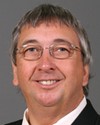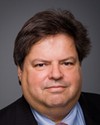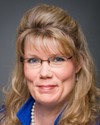That's correct.
Evidence of meeting #12 for Official Languages in the 40th Parliament, 3rd session. (The original version is on Parliament’s site, as are the minutes.) The winning word was question.
A recording is available from Parliament.
Evidence of meeting #12 for Official Languages in the 40th Parliament, 3rd session. (The original version is on Parliament’s site, as are the minutes.) The winning word was question.
A recording is available from Parliament.
Chief Specialist, Language Statistics Section, Statistics Canada
But there would have to be a will to conduct that type of survey and to gather that type of information. Francophiles often say they are open, regardless of the language of service. That's not always the case of individuals of francophone stock.
I'm sorry, but I don't remember your last question.
Conservative

Sylvie Boucher Conservative Beauport—Limoilou, QC
My last question was precisely on this subject, but I have another one.
Bloc

Richard Nadeau Bloc Gatineau, QC
Thank you, Mr. Chairman.
Mr. Corbeil, a little earlier you said something that has stayed in my mind. We find ourselves in a paradoxical situation in which we are asking francophone immigrants, regardless of their country of origin, to fill a void and thus to contribute to the continued existence of the French fact, whereas francophones and French Canadians are not doing that job themselves. They are under social, historic and even daily pressure that pushes them to join a surrounding anglophone majority. They no longer even identify with their origins, with what their parents taught them, with the cultural heritage they gave them. That's a crucial problem.
I remember one young woman who, following her studies at the University of Ottawa, was hired as a teacher at Zenon Park, a very rural community. That girl was originally from Ottawa, an urban area. She had asked whether there was a shopping centre nearby where she could do our shopping. The recruiters, who really wanted to hire this teacher, answered that there was a large shopping centre in that place. The large centre in question was in fact a Sears depot. So you can somewhat see the paradox. When people want to attract immigrants to a certain place, they at times deform the facts.
We consider Eastern Ontario a rural area. I'm originally from Hawkesbury and I've made the unfortunate mistake of talking about "my home village of Hawkesbury". People from there responded by saying that there were now five traffic lights in Hawkesbury. So I said "in my home town of Hawkesbury" because I didn't want to be stoned that day. There's also the aspect of the proximity between Montreal, Quebec, and the region east of Ottawa, which I would say is the basic ingredient that very much shapes the sense of identity. Acadians have that pride; they have a national identity of their own, which is a major strength.
That said, we are talking about linguistic aspects here, about the French fact, about the francophonie, but are we also talking about the ethnolinguistic aspect, about the cultural identity that is that of francophones? You mentioned it. Someone may say: "I'm a francophone, but I consider myself an anglophone."
The other aspect is religious practice. Some people come from the Maghreb, from North Africa, for example, where there are francophones, or even from Europe. We've seen, in the history of Quebec, Huguenots, that is Protestants, denied access to Catholic schools and having to attend English schools. That's ancient history, but it happened to people of my generation and older than me.
According to your statistics, do the francophones who arrive in a place where certain aspects of this francophone reality do not meet their cultural, religious and identity aspirations stay in that environment for a long time, or do they tend to head toward the major centres where they can find a nucleus?
Chief Specialist, Language Statistics Section, Statistics Canada
Thank you for your question. I would say it's quite complex. We know that, if we adopt this concept of immigrant integration, it's of course linguistic, cultural, economic and social integration. As we mentioned, language is only one of the factors of that integration, of course.
Quebec is a quite obvious example. In the Maghreb community in Quebec, there are various types of integration, various approaches. We know very well that the Arabic mother tongue community in Quebec is one of the largest groups of recent immigrants and that those immigrants will not integrate easily. It isn't just the linguistic aspect that is involved. We are pleased to receive francophone immigrants, but cultural and social integration, particularly in more "traditional" communities, if we may use that term, raises obvious challenges.
When I went to make a presentation before various representatives of the French-language school boards of Eastern Ontario following Ontario's decision to adopt a new definition of francophonie to include immigrants, they were very interested but, at the same time, somewhat novices in the field since there are no immigrants in that region. For them, the entire issue of immigrant integration in francophone communities was a novelty, whereas that is not the case in the major urban centres. It may vary by region, but when it comes to the rural regions, there is often more than just the issue of linguistic integration; there is the act of entering a community that does not at all have the same customs and usages, as it were.
Liberal

The Vice-Chair Liberal Mauril Bélanger
Thank you.
This brings us to the end of the third round. I admit I was hoping Mr. Blaney would be back by now so I could ask a few questions myself. However, since we're not starting the fourth round, I'm going to hand over to Mrs. Glover. With my colleagues' permission, I'll ask a few questions as well, and then, if other members of the committee want to add something, we can come back to them, which will bring our meeting to an end. Then we'll proceed with our steering committee meeting.
Mrs. Glover, go ahead, please.
Conservative

Shelly Glover Conservative Saint Boniface, MB
Mr. Chairman, I'm giving you the chance to ask your questions before me because we may be interrupted.
Liberal

The Vice-Chair Liberal Mauril Bélanger
Thank you.
Mr. Corbeil, in your presentation you provided some interesting statistics on the francophone population outside Quebec. You said that the percentage of immigrants increased to 10% of that population, whereas it was 6% in 1991. So it has increased from 6% to 10%. In the anglophone population, again outside Quebec, I believe the percentage has increased from 18% in 1991 to 22%.
I'm trying to get an overall picture. I'd like to have the absolute figures, first, so we can see the weight of each relative to the francophone community and anglophone community as a whole. Can you send that to the committee?
Chief Specialist, Language Statistics Section, Statistics Canada
I can even give it to you right away, if you wish.
Liberal

The Vice-Chair Liberal Mauril Bélanger
First I'm going to ask my question. Then you can do it if there is any time left.
Do you have any statistics on the anglophone population and anglophone immigration in Quebec during the same period of time?
In addition, you stopped at 1991. Would the 1986 Census questions make it possible to go back even further, or did the questions change at that time?
Then you said it seems that francophone immigrants are settling in different places in urban centres, more downtown than in the suburbs. Can we consider that that can be explained by mainly economic reasons, or are there any other reasons that you could give?
Lastly, about a month and a half ago, Statistics Canada made public its projections for the visible minorities populations for 2031. Are there any linguistic projections for 2031? Is anyone planning to prepare them, if there aren't? Could you start that, and how much would it cost?
Thank you. All that cost me two and a half minutes.
Conservative

Sylvie Boucher Conservative Beauport—Limoilou, QC
He won't have time to answer all the questions you've asked.
Chief Specialist, Language Statistics Section, Statistics Canada
I'm going to answer your first questions quickly. Even by redistributing the English-French category, we're talking about approximately 5 million English-language immigrants outside Quebec; there are about 100,000 French-language immigrants. That gives us have an idea of the numbers.
In Quebec, according to the 2006 Census, there are approximately 850,000 immigrants, of whom 325,000 are anglophone and slightly less than 500,000 francophone. It is interesting to note as well that we know that 33% of anglophones in Quebec, for example, are immigrants and 8% of francophones are immigrants. That also gives us an idea of the numbers.
On the other hand, let's look at how many immigrants are anglophones. We see that 38% of immigrants are anglophones and 57% francophone. That's a lot, of course, as a result of the past weight. As regards immigrants who arrived very recently, that is to say in 2001 and 2006, 64% of immigrants in Quebec are francophone, as opposed to 31% who are anglophone. That gives you an order of magnitude.
You asked the question whether there was a way to go back further in time. That's possible, of course. In 1991, we regrouped all the language questions, which reduced the number of multiple answers to census questions because people were able to express the language knowledge they had and to understand the questions asked them after the fact. Obviously, we could easily go back to the 1970s, at least starting in 1971, because we have one question on the language spoken in the home. So we have the question concerning the first official language spoken.
Your second-last question concerned the reasons... We know that immigrants have a greater tendency to settle in urban areas rather than rural areas, depending on the province, of course. In New Brunswick, for example, we know that the francophone population generally lives more in small municipalities and in rural rather than urban areas. However, there has been a significant migration to Moncton in recent years.
Liberal
Chief Specialist, Language Statistics Section, Statistics Canada
All right, that's fine.
Perhaps I can briefly answer your question on population projections. I don't know whether that interests you.
Chief Specialist, Language Statistics Section, Statistics Canada
Projections have been done for visible minorities. It is complicated to project in time—to 2031—what the francophone population in Canada will be relative to the anglophone population. A lot of assumptions have to be established because we have to try to take into account migration, language transmission, language transfers, and so on. It's quite a large-scale project. No one is currently doing that kind of study, or has already done it. More standard or more conventional projections have been made in the past, in Quebec, among others, by Marc Termote.
However, based on the model that has been developed and the information that has been distributed on visible minorities, this approach is relatively new and has not been used for other purposes. I know it is currently being done for aboriginal peoples. It's a project, a type of study, that could cost between $450,000 and $500,000 and could require about one year of work. In so doing, we would be able to establish these kinds of projections.
Liberal